Moritaka Hamono
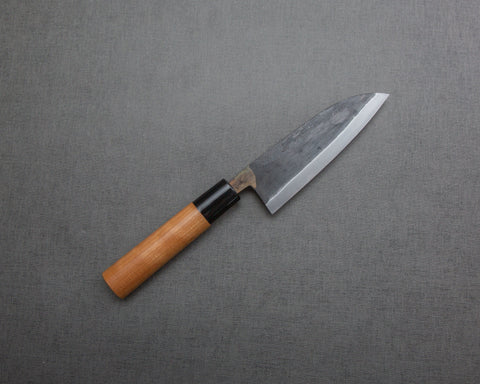
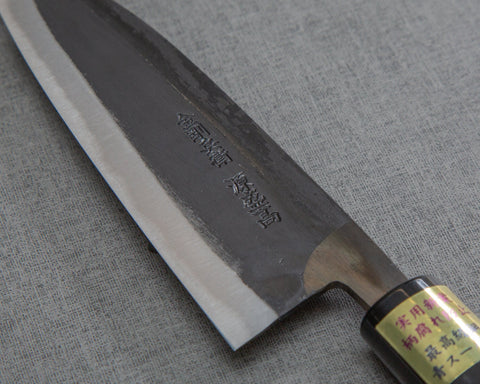
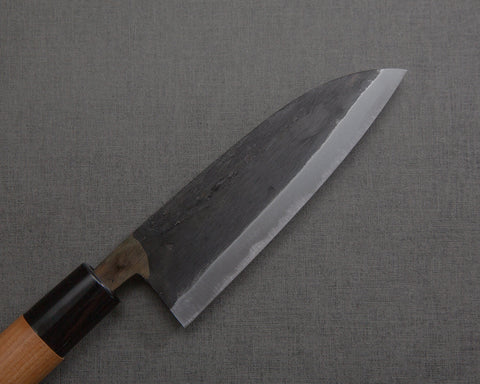
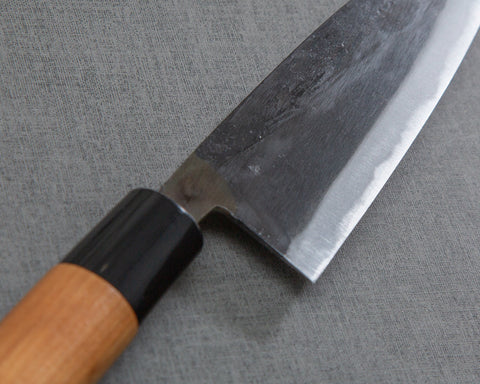
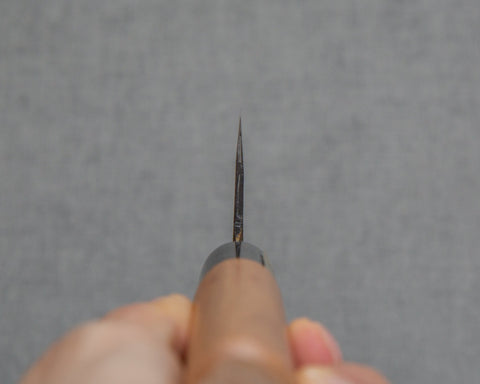
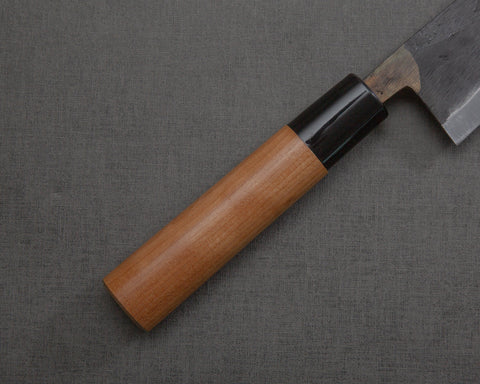
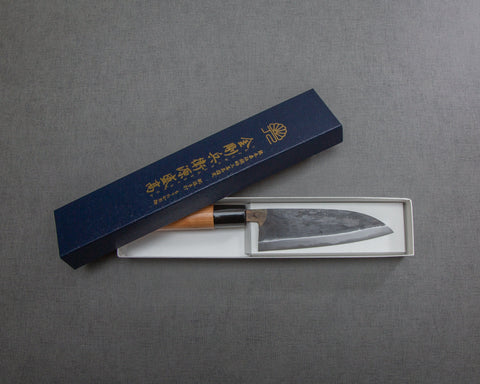
Moritaka Hamono Aogami Super 130mm Ko-Santoku
Pickup currently unavailable
This small multi-purpose Santoku is designed for cutting meat, fish, or vegetables, and it’s especially useful for filleting soft-boned fish such as horse mackerel. Hand-forged with Aogami Super core steel using Moritaka’s signature Warikomi construction, heat-treated to 64 HRC, with a medium-rough Kurouchi finish and kasumi on the grind. Fairly flat grind and thinness behind-edge. Superb edge retention and still easy to sharpen and thin.
*Note: the "discoloration" close to tang is part of Moritaka's patented handle assembly, which is basically welded stainless steel to prevent rusting of the nakago. Kuchiwa and Cherry Wood handle are not flush. These are not faults.
Spec:
- Origin (Made in): Yatsushiro, Kumamoto Prefecture, Japan
- Brand: Moritaka Hamono
- Knife Type: Santoku
- Blade
- Construction: Warikomi
- Grind: Double-edged Blade (50/50 Grind)
- Hagane (Core Steel): Aogami Super (Blue Super)
- Jigane (Cladding): Soft Iron
- Hardness: 64 HRC
- Hand-forged, hand-grinded, hand-sharpened
- Blade Finishes: Kurouchi
- Blade Length: 130mm (5.1")
- Blade Height (at heel): 39mm
- Spine Thickness
- Above heel: 2.8mm
- Middle: 1.6mm
- Handle
- New Long-Lasting Handle
- Shape: Marugata (Oval-shaped)
- Material: Cherry Wood
- Kuchiwa: Durable Plastic
- Length: 114mm
- Overall Length: 252mm
- Weight: 75g (2.65oz)
- Engraved Mark: In Japanese Kanji "Kongohyoe Minamoto no Moritaka" (金剛兵衛 源盛高)
About Moritaka Hamono 盛高刃物
Founded in 1293 during the Kamakura Period by Kongohyoe Minamoto no Moritaka (金剛兵衛源盛高), Moritaka Hamono has a blade-making history of over 700 years. For the first 13 generations, the family made swords for Buddhist priests at Mt. Homan in Dazaifu, Fukuoka. In 1632 the family followed the Lord of Kumamoto to Myoken Shrine in Yatsushiro City of Kumamoto, and continued forging swords for Buddhist guards until 5 generations ago, when master swordsmith Chuzaemon Moritaka decided to expand the family business and apply their forging experience to chef knives. Since then the Moritaka family have been making solid and affordable hand-crafted knives and various agriculture steel tools for customers. Moritaka Hamono has pioneered hand-forged Warikomi constructions and patented stainless cladded rosewood handle assembly. Today the 27th generation blacksmith Tsunehiro Moritaka works with his father, one master craftsman and one apprentice to make all the knives for the Moritaka brand.
Care:
Aogami Super (Blue Super) steel is considered the most superior Japanese high carbon steel for knife making. Despite some corrosion resistant quality (for a carbon steel), it is not stainless, therefore you should wipe your knife dry after each use. Patina will develop over time. Rust may develop if left in prolonged contact with water or acidic food. Use a rust eraser to clean if rusts develop. Avoid cutting into bones, frozen foods, hard fruit pits.
Cutting Surface:
Recommended cutting surface: wood, rubberized boards and high-end composites, and quality plastics such as polyethene make acceptable cutting surfaces, and will help protect and prolong knife’s edge. AVOID glass, metal, countertops, and other rigid, non-forgiving surfaces.
Sharpening:
We recommend sharpening all quality Japanese knives on whetstones, as we believe they yield the best results for your knives.
Free Shipping
Free Shipping on most orders.
30 Days Return
Return unused within 30 days for a full refund, no questions asked (terms apply).
Top Japanese Makers
All knives made in Japan by top Japanese knife makers.
About
Burrfection Store sources professionally designed sharpening products, and knives from top Japanese craftsmen.
